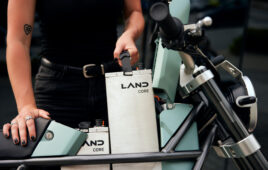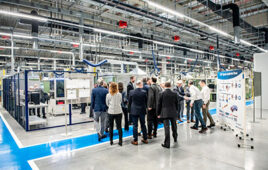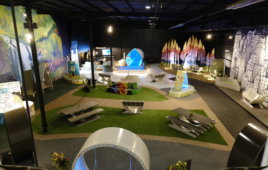Radio broadcasts are a proven educational tool and remain an important communications medium in the developing world. However, the lack of electricity, weak signals, and the availability and cost of batteries limit radio access in many areas. For these reasons, U.K.-based Lifeline Energy developed the Lifeplayer, a combination multi-band radio, MP3 player and recorder that runs off solar or wind-up power. The player can store up to 64 GB of content and uses a microSD card to play or record educational content.

Executive Director Philip Goodwin explained that environmental sensitivity has been a part of the design approach in excess of mandated restrictions on the use of hazardous substances. “We approached the design in a modular fashion, allowing for the simple maintenance, repair or replacement of elements of the Lifeplayer—and the separation of parts, components or modules for disposal at the end of life. All sub-assemblies are connected with cables and connecters so that all that is required to service the Lifeplayer is a screwdriver—no soldering irons or specialized equipment. PC boards, the gearbox, and plastic components can be replaced in this fashion if simple repair is not an option. Plastic components can be separated for recycling and dissimilar materials are not permanently fused in the design.”
Lifeline Energy used feedback from years of field work in sub-Saharan Africa with an earlier model, the Lifeline radio. Goals for the new player were:
• Reduce overall unit size/volume for freight efficiencies
• Increase audio output for larger classrooms or listeninggroups of 60 to 100
• Improve solar panel integration and power options
• Design for automated manufacture and testing to assure consistent quality and quality reporting
• Improve assembly modularity for maintenance and end-of-life recyclability
Two discreet paths were followed—hardware design (both mechanical and electronic), and firmware design (the user interface).
Initial design concepts centered on using a horn speaker to boost audio, but this greatly increased the player’s size. Engineers also explored multiple integrated speakers to increase audio through more speaker surface area and speaker impedance change. Those efforts were abandoned in favor of a power-based method of increasing audio output, but at a penalty of increased power consumption and shorter playtimes. “We also included the option of a pre-amplified auxiliary speaker output to allow simple locally produced and inexpensive additional speakers to be plugged in.”
The user interface was arguably the most important element. The interaction of technologically unsophisticated users with a suite of functions (5 band radio, MP3 playback, pause, fast forward, rewind, radio recording, voice recording, file deletion, file navigation) required a lot more interaction and iterations.
“We arrived at a very basic and intuitive graphic intensive LCD interface that has only one control knob,” Goodwin said. “This single control lets users navigate through the features and functions as a function of the particular firmware that is loaded.”
Firmware upgrades are simple and can be implemented in the field through a boot loader interface using the microSD card slot.
Although a cradle-to-grave analysis was not conducted, Goodwin said they paid attention to reducing the carbon footprint through material and size reduction. “The Lifeplayer provides communities and individuals in the developing world with sustainable access to information. It does so using solar energy, human energy and available grid energy—all stored in internal rechargeable cells,” he said. “The positive environmental impact of this device, when compared to traditional radios using poor quality and toxic disposable batteries … increases the more the Lifeplayer is used.”
::Design World::
Filed Under: Green engineering • renewable energy • sustainability, Energy management + harvesting, TEST & MEASUREMENT





Tell Us What You Think!